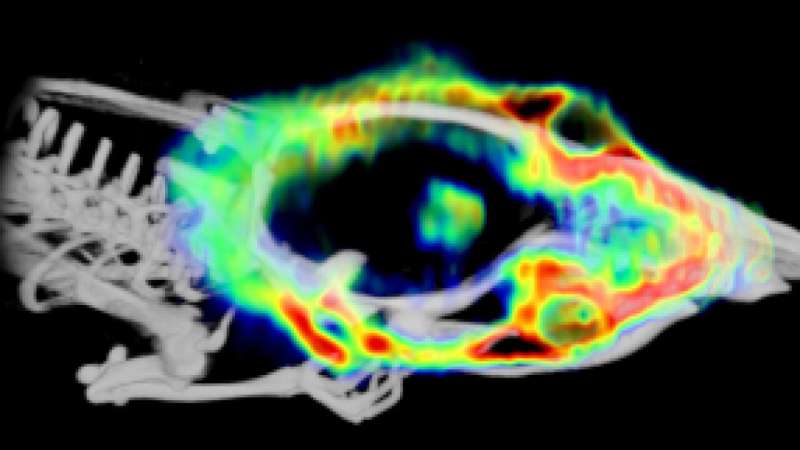This article has been reviewed according to Science X's editorial process and policies. Editors have highlighted the following attributes while ensuring the content's credibility:
fact-checked
peer-reviewed publication
trusted source
proofread
New discovery can help detect brain tumors

Folate-based radiopharmaceuticals can be used in positron emission tomography (PET) imaging to detect folate receptors in brain tumors. The discovery of folate receptors and their exploitation potential with respect to brain tumors is a new and significant finding in the field. The work is published in the journal Frontiers in Immunology.
The discovery is related to gliomas, which are a group of serious brain tumors. Researchers discovered that brain tumors contain increased amount of folate receptor expression relative to adjacent brain tissue. This phenomenon has been observed in both experimental models and human tumor samples.
"Prior to this discovery, the presence of folate receptors and their increased presence in gliomas had not been recognized, and thus they have not yet been used for imaging nor treatment purposes," says Doctoral Researcher Maxwell Miner from the Turku PET Center at the University of Turku in Finland.
According to research group leader and InFLAMES PI Professor Anne Roivainen this presents an especially exciting target for potential future treatments.
"Our results show an average of 100-fold increase in folate-based radiopharmaceutical accumulation in glioma tissue versus that of adjacent healthy brain tissue," says Professor Roivainen.
Urgent need for new chemotherapy treatments
Glioma brain tumors originate from the non-neuronal glial cells in the brain, which outnumber neurons in quantity. Gliomas comprise numerous subgroups, with even a high degree of morphological and receptor variability within a single cancerous lesion.
This exceptional cellular heterogeneity can make treatment difficult. There is an urgent need for new chemotherapy treatments particularly for the most malignant brain cancers as they often grow in an infiltrative web-like manner on their periphery making distinguishing the boundaries between glioma and non-glioma difficult. The researchers at the Turku PET Center hope that this recent discovery will lead to further investigation into folate-targeted brain tumor detection and treatment.
The results were obtained in a multidisciplinary joint project involving researchers from the Turku PET Center at the University of Turku, Turku University Hospital, InFLAMES Research Flagship, and collaborators from Purdue University, U.S.. The glioma samples were obtained from the Auria Biobank.
More information: Maxwell W. G. Miner et al, High folate receptor expression in gliomas can be detected in vivo using folate-based positron emission tomography with high tumor-to-brain uptake ratio divulging potential future targeting possibilities, Frontiers in Immunology (2023). DOI: 10.3389/fimmu.2023.1145473


















